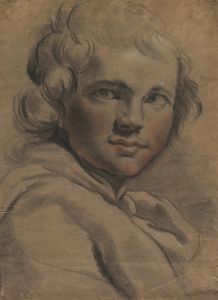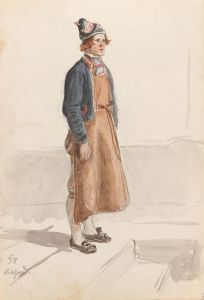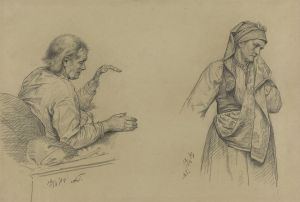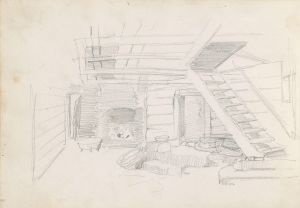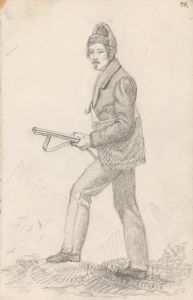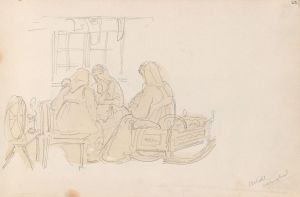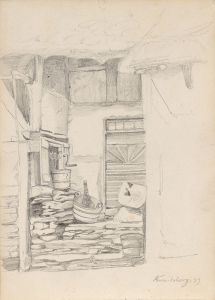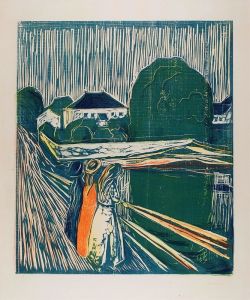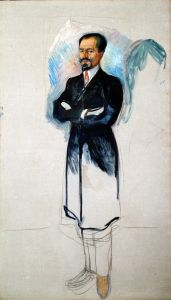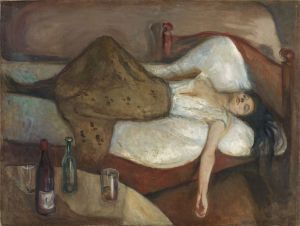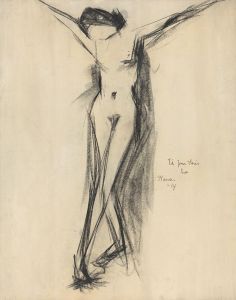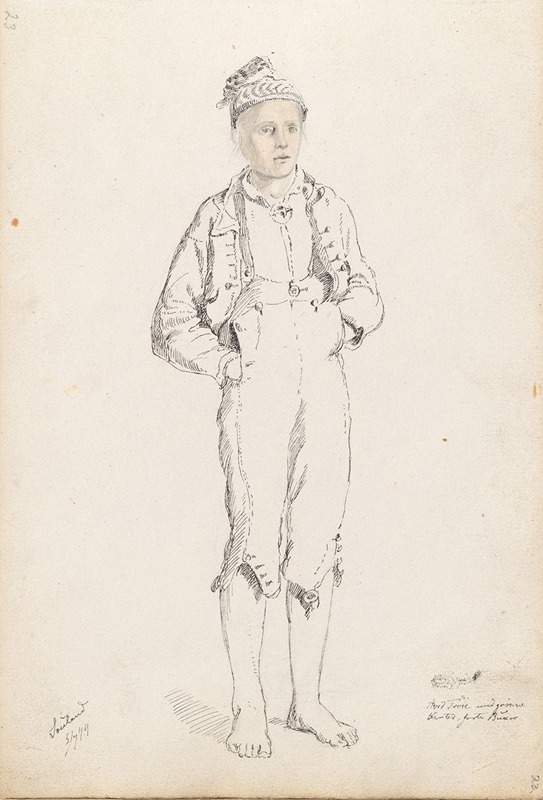
Ung gutt, Sauland
A hand-painted replica of Adolph Tidemand’s masterpiece Ung gutt, Sauland, meticulously crafted by professional artists to capture the true essence of the original. Each piece is created with museum-quality canvas and rare mineral pigments, carefully painted by experienced artists with delicate brushstrokes and rich, layered colors to perfectly recreate the texture of the original artwork. Unlike machine-printed reproductions, this hand-painted version brings the painting to life, infused with the artist’s emotions and skill in every stroke. Whether for personal collection or home decoration, it instantly elevates the artistic atmosphere of any space.
Adolph Tidemand's painting Ung gutt, Sauland (translated as Young Boy, Sauland) is a work by the renowned Norwegian artist Adolph Tidemand (1814–1876). Tidemand is widely celebrated for his contributions to Norwegian romantic nationalism and his depictions of rural life, traditional customs, and the everyday people of Norway during the 19th century. His works often reflect a deep interest in Norwegian culture and identity, particularly during a time when the country was seeking to define itself as a nation.
Ung gutt, Sauland portrays a young boy from Sauland, a village in the Telemark region of Norway. Telemark was a frequent source of inspiration for Tidemand, as it was known for its rich cultural traditions, distinctive folk costumes, and picturesque landscapes. The painting captures the boy in traditional Norwegian attire, a hallmark of Tidemand's work, which often emphasized the importance of preserving Norway's cultural heritage.
The exact date of the painting is not widely documented, but it is consistent with Tidemand's broader body of work, which spans the mid-19th century. His art often combined realism with romanticism, focusing on the dignity and character of his subjects. In Ung gutt, Sauland, the boy's expression and posture convey a sense of quiet introspection, a characteristic feature of Tidemand's portraits.
Adolph Tidemand studied art in Copenhagen, Düsseldorf, and Italy, and he became one of the leading figures of the Düsseldorf School of Painting. This movement was known for its detailed and narrative-driven approach to art. Tidemand's works, including Ung gutt, Sauland, reflect his technical skill and his ability to tell stories through his subjects. His paintings were instrumental in shaping the visual identity of 19th-century Norway and remain significant in the country's art history.
Today, Ung gutt, Sauland is recognized as part of Tidemand's legacy of documenting Norwegian rural life and traditions. The painting is an example of his dedication to portraying the people and culture of Norway with authenticity and respect. It continues to be appreciated for its cultural and historical significance, as well as its artistic merit.





